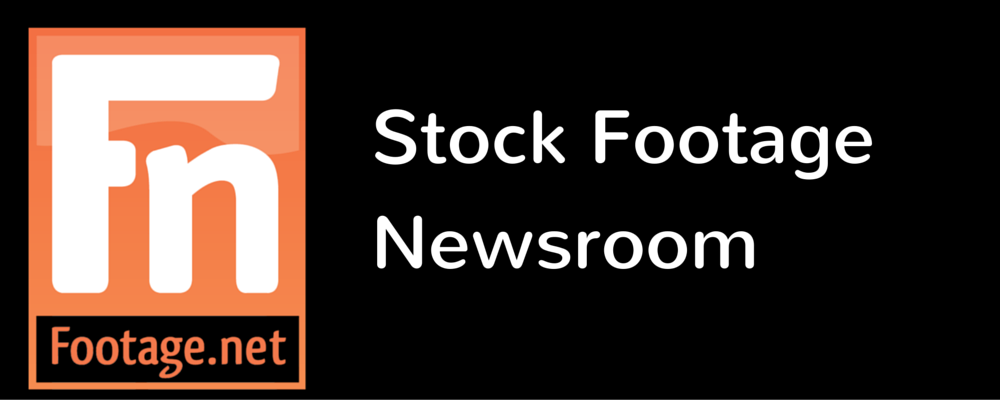Archives Bridge the Gap as "Content Desert" Looms
/We’ve been talking with a range of industry experts to get a better sense of what lies ahead during the gloabl pandemic lockdown, and this month documentary industry veteran Peter Hamilton was kind enough to provide his take.
I’m reading in today’s The New York Times about the complex system of COVID-testing and armband ID’s used by the director Baltasar Kormakur to get his Sci-Fi series back into production.
According to Mr Kormakur, as well as a rigorous protocol for testing, temperature-taking and masking, “those wearing yellow armbands could be near the camera; the actors, and the makeup and costume professionals wore black and spent most of their prep time in a cordoned-off area of the set; and the producers, script supervisors and visual effects people wore red and were sequestered near the monitors. A few lucky ones were given blue armbands, which allowed them access to all areas of the set.”
And he’s working in his own studio in Reykjavik, Iceland, the most isolated and controllable country in Europe!
Imagine how tough it’s going to be to resume work in Los Angeles, New York, Vancouver, Toronto and other big-city production centers where COVID has suspended the hundreds of Scripted series that were in the planning or production stages?
And it’s not just Scripted that is impacted: most popular Reality series – from ‘Occu-soaps’ to shiny-floor elimination shows like “Dancing With the Stars” -- are locked into a COVID ‘pause’.
These programs are the viewers’ must-watch or binge-able favorites on platforms like Netflix as well as on broadcast and Cab/Sat networks.
Pipeline Shrinks / Audience Up
According to Omdia Reasearch, Netflix launched 657 first-run original titles in 2019, up from 386 in 2018. A comparable 70% increase was projected for 2020.
The suspension of so many of these programs means that we’re heading towards a ‘content desert!’
For Netflix, the program drought will be even more severe because it is also losing its high-rated reruns of broadcast classics like Friends because they are returning to the studios' owned streamers, like WarnerMedia’s HBO Max.
Meanwhile, viewing has expanded as stay-at-home workers and the suddenly unemployed eat up more video entertainment than ever.
A comparison of Nielsen audiences from a year ago to the COVID period to date (3/11-5/12/2019 vs. 3/9-5/10/2020) reveals substantial gains for most cable networks. Examples are CNN (136%), FYI (65%), Smithsonian (41%), Nat Geo Wild (35%) and TLC (27%).
These gains are all the more impressive when they are set against losses in distribution due to cord-cutting: PayTV platforms lost 2.1 million video subscribers in 1Q 2020.
Filling the Gap
How can programmers refill their suddenly shrunken pipelines with fresh and appealing programs?
The Documentary & Unscripted category is an important solution because many productions can be developed and delivered without running into COVID distancing restrictions, and the Archive is an important and widely used solution.
Archive-based programs can be developed and produced with small, remote teams led by a researcher/writer and editor. The process is efficient, enabling shorter terms from green light to delivery compared with Scripted. Costs can often be controlled via output deals with major archive owners.
At the most basic level, producers are filling gaps in the schedule with narrated clip shows, ranging from battle highlights to animal behavior.
History
In the History genre, buyers are looking to commission Original programs that are footage-based and tied to anniversaries of era-changing events. These are the moments that generate extensive social and press coverage which the platforms can in turn harness to promote viewer awareness and sampling.
A notable recent model is Tom Jennings’ Apollo: Missions to the Moon for Nat Geo Channel that recently won for his 1895 Films the PGA award for Outstanding Producer of Televised or Streamed Motion Pictures against competition from Scripted series led by Breaking Bad.
Jennings uses a cinematic style in which a multi-layered archive is cut to tell the story without narrator or presenter.
In a call-around to producers last week, I learned of archive-based projects that are in contract and that focus on great leaders, celebrity bios, historic Sports rivalries and championships, wars and political conflicts, and more.
Other History projects earning a positive response from commissions are inspired by Nutopia’s Last Czars for Netflix. The format blends the archive with CGI and small-ensemble dramatic reenactments that can pass COVID production safety rules.
Backyard Wildlife
The popular Wildlife pipeline needs to be replenished now that David Attenborough and the big BBC Natural History Unit-style productions are grounded.
Buyers are turning to “Backyard Nature” where cinematographers combine their owned footage with current sequences that they can capture locally. This marks a shift from the magnificent sequences of Our Planet to endearing character-based stories of animals and people.
Wildlife producers are also turning to the archive: for example, the format of Natural History New Zealand’s Extreme Animals is a countdown of the ten most extreme critters for any given behavior or location. The sequences are drawn from the NHNZ’s deep archive.
The audience for Current Affairs programs has also expanded in response to recent unsettling political shifts that are now being amplified by coronavirus, and the category also relies on footage.
While the archive is unlikely to deliver a replacement for a suspended next series of a scripted hit like The Handmaid’s Tale, the good news is that in the coming “Content Desert,” the archive will pay an important role in filling the shrunken pipeline. The archive is already creating programs across many genres and cost levels that will help bridge the gap between the pre-COVID production boom and post-COVID recovery.
Article by Peter Hamilton.

